What is that charge of eros a mural has that is so breathtaking compared to an illustration or a poster? Many of the most intriguing mural masterpieces in American institutions were executed in the first half of the 20th century. They often not only depict an important moment in the formation of the country, but also attempt to roll out the entire history of a state or region.
Because of the historical context, shirtless steelworkers, brawny farm boys, rugged cowboys, and mostly naked Native Americans are apt to be found on the soaring walls of the main post office, university dining hall or public library. And then there is scale -- magnificent figures often at twice human scale or more. For many young boys, seeing large-scale naked male figures in public buildings was the first exposure they had to male nudity before modern digital media interceded. I recall volunteering to return books to our small-town library to be able to see some classical biblical scenes rendered on the walls.
Some of our most revered mural artists were gay: John Singer Sargent, Grant Wood, Jared French, and Paul Cadmus to name a few. Perhaps the inclusion of sensually naked and muscular men -- sometimes by the tens -- was an undercover form of self-expression and communication. They might have been painting for a select audience that would connect to the homoerotic tone of the work, while at the same time receiving an honorarium or grant from a conservative university or federal government branch.
There is no evidence that Dean Cornwell was gay. His work, however, tells the story of an artist with an acute appreciation for a magnificent male body. In his historic pieces and his military work, the sexuality blooms on the canvas. In his murals he does not shy away from a naked Native American flank or a well-plated chest of a shackled slave. His painting of John the Baptist with Jesus is as romantic and sensuous as his many illustrations of straight couples in the popular magazines of the time.
 Above: Cornwell completed the Herculean task of a series of murals in the Los Angeles Public Library in 1932 -- Four Great Eras of California History in a series of four panels: The Founding of Los Angeles, The Discovery Era, The Mission Era, and The Americanization of California.
Above: Cornwell completed the Herculean task of a series of murals in the Los Angeles Public Library in 1932 -- Four Great Eras of California History in a series of four panels: The Founding of Los Angeles, The Discovery Era, The Mission Era, and The Americanization of California.
Born in 1892 in Kentucky, he made his way, like most other illustrators of the day, to the Art Students League in New York, in 1915. Cornwell also apprenticed with Frank Brangwyn, a remarkable English artist and muralist who also had a dab hand at depicting beautiful men and boys. He was able to apply Brangwyn's methods so well that often their works are hard to tell apart, especially with his work in the series "The Robe," and they are often misidentified on Internet image searches.
Cornwell was soon hired to illustrate for the major American magazines of the time: Harper's Bazaar, Cosmopolitan, Redbook, Good Housekeeping, and American Magazine. He was an adverising ilustrator for many popular products and major companies such as Seagram's, Palmolive Soap, Scripps-Howard newspapers, Coca-Cola, and General Motors.
No less than Norman Rockwell and James Montgomery Flagg praised his talents. Rockwell dubbed Cornwell the "Dean of Illustrators."
Source: AmericanIllustration.org
Click through for more of Cornwell's work, including more of the Los Angeles Public Library murals >>>
 The Baptism of Jesus, from The Man of Galilee: 12 Scenes From the Life of Christ, from the 1928 book by Bruce Barton
The Baptism of Jesus, from The Man of Galilee: 12 Scenes From the Life of Christ, from the 1928 book by Bruce Barton
 The Washing of His Feet, from The Man of Galilee: 12 Scenes From the Life of Christ, from the 1928 book by Bruce Barton
The Washing of His Feet, from The Man of Galilee: 12 Scenes From the Life of Christ, from the 1928 book by Bruce Barton
 Jesus Before Pilate, from The Man of Galilee: 12 Scenes From the Life of Christ, from the 1928 book by Bruce Barton
Jesus Before Pilate, from The Man of Galilee: 12 Scenes From the Life of Christ, from the 1928 book by Bruce Barton
 Illustrations from The Robe by Lloyd C. Douglas, 1948
Illustrations from The Robe by Lloyd C. Douglas, 1948
 Illustrations from The Robe by Lloyd C. Douglas, 1948
Illustrations from The Robe by Lloyd C. Douglas, 1948
 Illustrations from The Robe by Lloyd C. Douglas, 1948
Illustrations from The Robe by Lloyd C. Douglas, 1948
 Illustration, One Night in Venice
Illustration, One Night in Venice
 Work for America!, 1918
Work for America!, 1918
 Unknown source
Unknown source
 A magazine article on the creation and painting of the Los Angeles Public Library murals.
A magazine article on the creation and painting of the Los Angeles Public Library murals.
 Los Angeles Public Library
Los Angeles Public Library
 Los Angeles Public Library
Los Angeles Public Library
 Los Angeles Public Library
Los Angeles Public Library
 A study for Sir Walter Raleigh and First Landing on the North Carolina Shore by Cornwell from the Morganton, N.C., Post Office. The actual implementation (below) was clearly a less provocative version with no languid Native American buttocks.
A study for Sir Walter Raleigh and First Landing on the North Carolina Shore by Cornwell from the Morganton, N.C., Post Office. The actual implementation (below) was clearly a less provocative version with no languid Native American buttocks.

 Advertising illustration for Fisher
Advertising illustration for Fisher
 Advertisement for Wyeth's
Advertisement for Wyeth's
 Advertising illustration for Coca-Cola
Advertising illustration for Coca-Cola
 Advertising illustration for Fisher
Advertising illustration for Fisher
 Advertising illustration for Ivory Soap
Advertising illustration for Ivory Soap
 Study for a mural
Study for a mural
 Study for a mural
Study for a mural
 Study for a mural
Study for a mural
 Study for a mural
Study for a mural
Want to see more mural hunks?
Public Art, Private Expression
Why do so many public murals seem to have a homoerotic tone?


















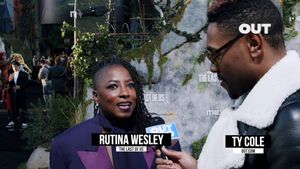








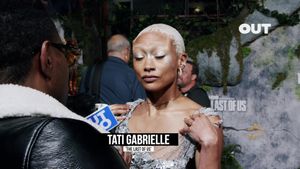
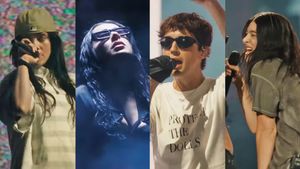
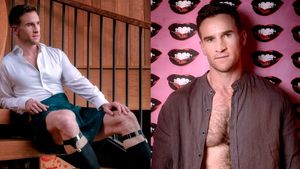


 Above: Cornwell completed the Herculean task of a series of murals in the Los Angeles Public Library in 1932 -- Four Great Eras of California History in a series of four panels: The Founding of Los Angeles, The Discovery Era, The Mission Era, and The Americanization of California.
Above: Cornwell completed the Herculean task of a series of murals in the Los Angeles Public Library in 1932 -- Four Great Eras of California History in a series of four panels: The Founding of Los Angeles, The Discovery Era, The Mission Era, and The Americanization of California. The Baptism of Jesus, from The Man of Galilee: 12 Scenes From the Life of Christ, from the 1928 book by Bruce Barton
The Baptism of Jesus, from The Man of Galilee: 12 Scenes From the Life of Christ, from the 1928 book by Bruce Barton The Washing of His Feet, from The Man of Galilee: 12 Scenes From the Life of Christ, from the 1928 book by Bruce Barton
The Washing of His Feet, from The Man of Galilee: 12 Scenes From the Life of Christ, from the 1928 book by Bruce Barton Jesus Before Pilate, from The Man of Galilee: 12 Scenes From the Life of Christ, from the 1928 book by Bruce Barton
Jesus Before Pilate, from The Man of Galilee: 12 Scenes From the Life of Christ, from the 1928 book by Bruce Barton Illustrations from The Robe by Lloyd C. Douglas, 1948
Illustrations from The Robe by Lloyd C. Douglas, 1948 Illustrations from The Robe by Lloyd C. Douglas, 1948
Illustrations from The Robe by Lloyd C. Douglas, 1948 Illustrations from The Robe by Lloyd C. Douglas, 1948
Illustrations from The Robe by Lloyd C. Douglas, 1948 Illustration, One Night in Venice
Illustration, One Night in Venice Work for America!, 1918
Work for America!, 1918 Unknown source
Unknown source A magazine article on the creation and painting of the Los Angeles Public Library murals.
A magazine article on the creation and painting of the Los Angeles Public Library murals. Los Angeles Public Library
Los Angeles Public Library Los Angeles Public Library
Los Angeles Public Library Los Angeles Public Library
Los Angeles Public Library A study for Sir Walter Raleigh and First Landing on the North Carolina Shore by Cornwell from the Morganton, N.C., Post Office. The actual implementation (below) was clearly a less provocative version with no languid Native American buttocks.
A study for Sir Walter Raleigh and First Landing on the North Carolina Shore by Cornwell from the Morganton, N.C., Post Office. The actual implementation (below) was clearly a less provocative version with no languid Native American buttocks.
 Advertising illustration for Fisher
Advertising illustration for Fisher Advertisement for Wyeth's
Advertisement for Wyeth's Advertising illustration for Coca-Cola
Advertising illustration for Coca-Cola Advertising illustration for Fisher
Advertising illustration for Fisher Advertising illustration for Ivory Soap
Advertising illustration for Ivory Soap Study for a mural
Study for a mural Study for a mural
Study for a mural Study for a mural
Study for a mural Study for a mural
Study for a mural




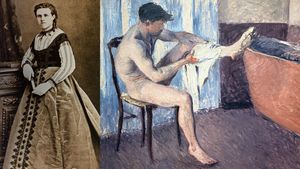




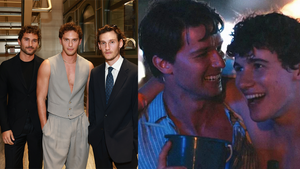

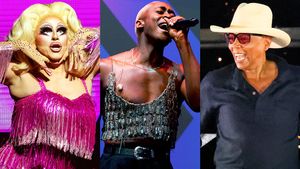

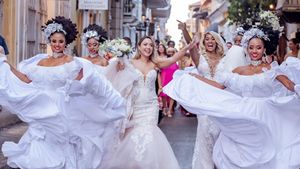


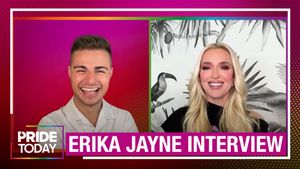
































Fans thirsting over Chris Colfer's sexy new muscles for Coachella